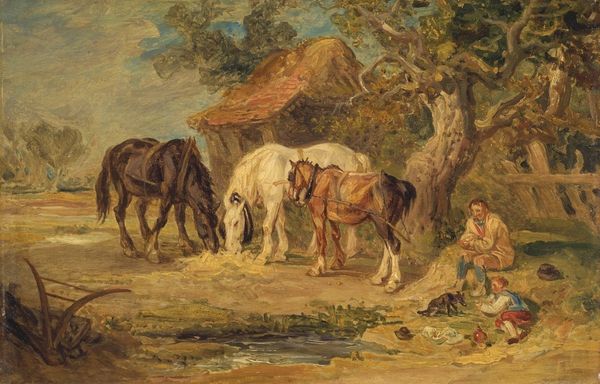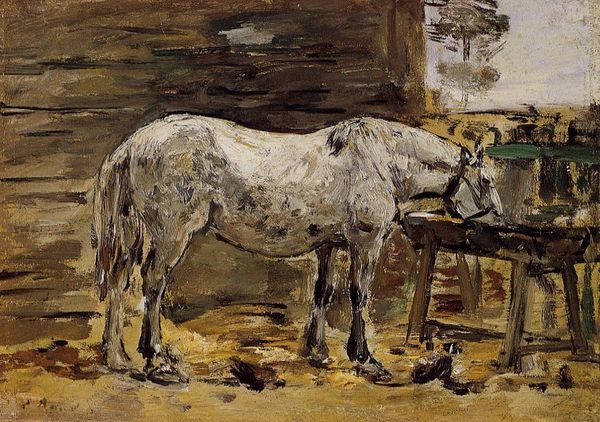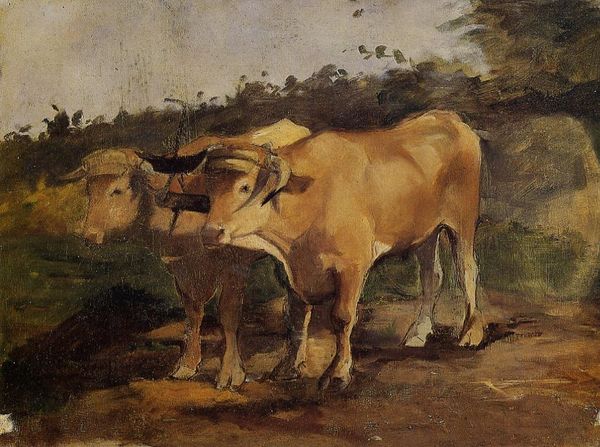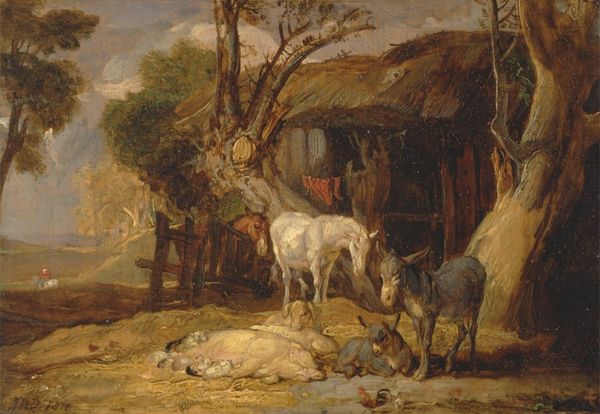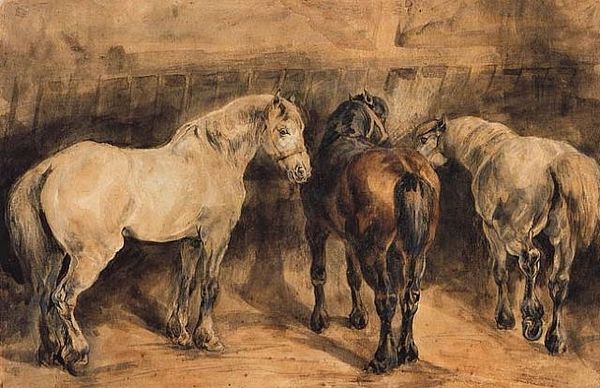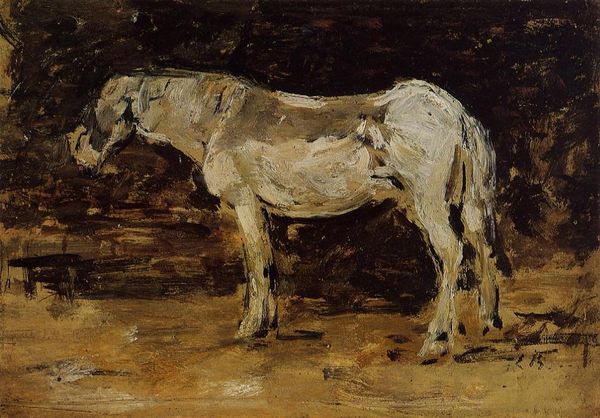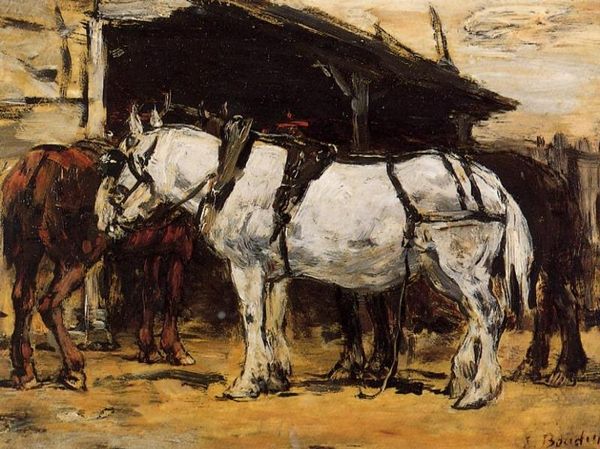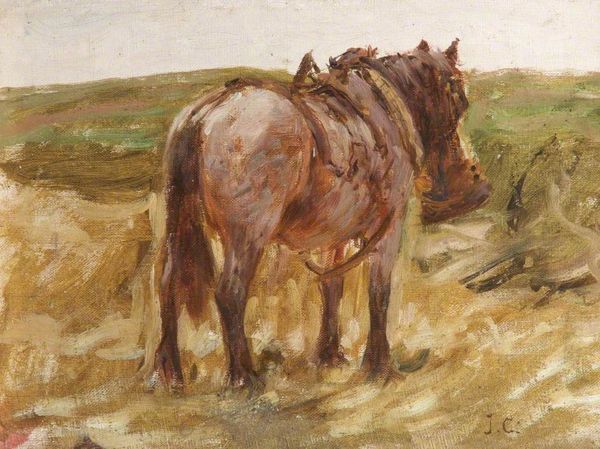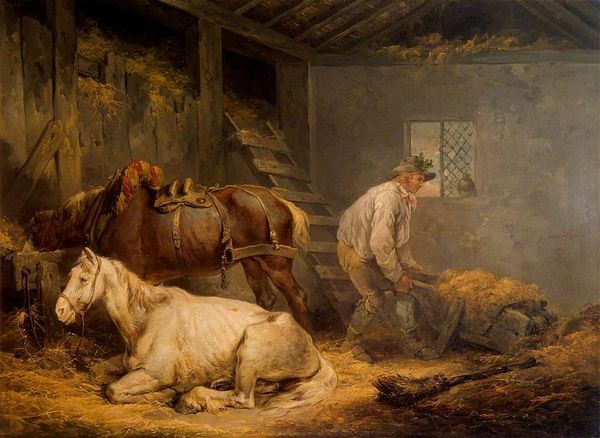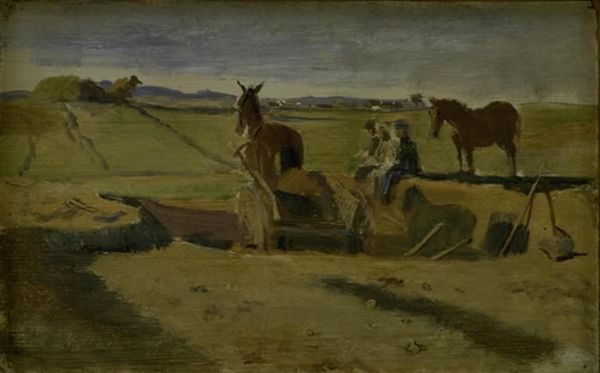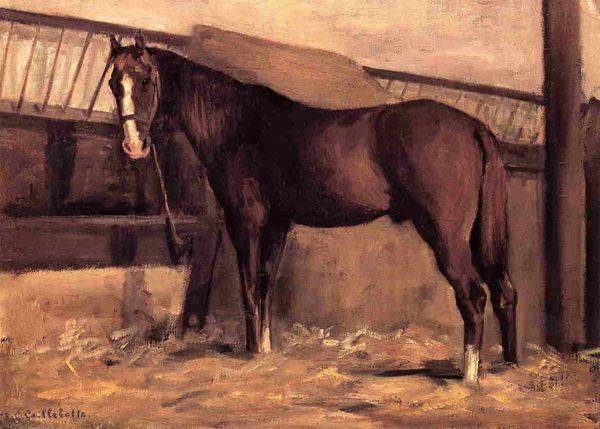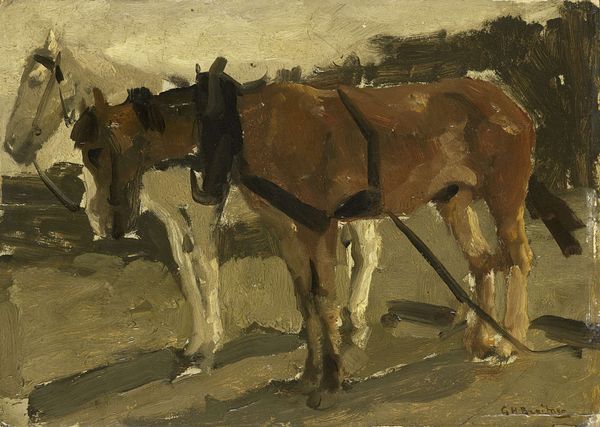
painting, oil-paint
#
animal
#
painting
#
impressionism
#
oil-paint
#
landscape
#
impressionist landscape
#
oil painting
#
horse
#
genre-painting
#
realism
Copyright: Public domain
Curator: Here we have Eugène Boudin's "Gypsy Horses," an oil painting from 1886. I find its rustic setting immediately evocative. Editor: It’s quite somber, isn’t it? The muted palette really captures a kind of weariness in both the horses and their surroundings. Notice the almost monochromatic rendering – mostly browns and whites. How does this limited colour range affect its impact? Curator: Indeed. The lack of vibrant colors lends a gravitas. Boudin focuses on capturing the forms and their arrangement: observe the geometry between the caravans, the animals' bodies, and the careful balance between light and shadow. Semiotically, we might read the subdued light as representative of a challenging itinerant life. Editor: And materially, that impression is only heightened, right? I wonder, were these actual work horses, and how did the production, the labor of pulling heavy carts and things impact their shapes and being? These are certainly working animals in what feels like their off-time. How does that feed into the genre painting aspect, especially considering how labor shaped them? Curator: That is a salient point about the impact of labor. The social context enriches our reading of Boudin's construction of form. The weight of their labour seems literally painted into the piece with thick brush strokes. Editor: The handling of oil paints on the horses conveys, not beauty per se, but ruggedness. You almost feel the rough texture of their coats and the wood. These compositional aspects draw one's eyes toward a more granular, palpable experience than expected. Curator: Precisely! Boudin eschews idealism; he crafts verisimilitude, both formally and contextually, thus creating art with remarkable historical resonance through nuanced aesthetic considerations. Editor: Seeing these majestic animals presented not heroically, but within their workaday environment prompts reflection on material reality of equine and human labor – almost grounding us with that soberness of reality. Thanks for pointing out all the formal and informal labor considerations. Curator: My pleasure; recognizing those visual codes expands our insight to grasp historical representation anew.
Comments
No comments
Be the first to comment and join the conversation on the ultimate creative platform.
